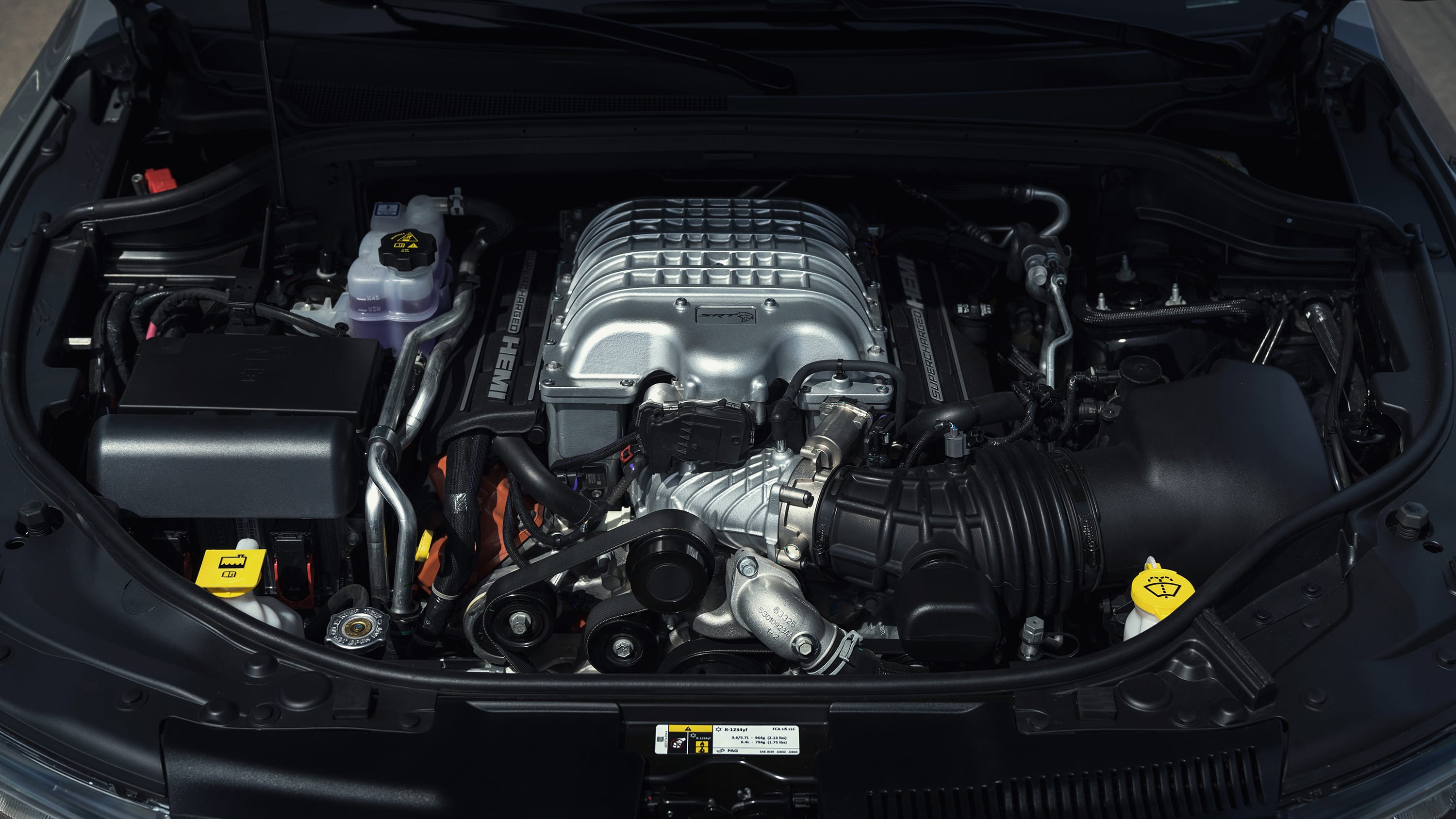Manifest Hellcat Destiny has brought us the latest inevitable supercharged V8 machine from Mopar, the 2021 Dodge Durango SRT Hellcat. And to make it extra-special, this 710-horsepower monster is the most powerful SUV that Chrysler — or any other automaker — has ever built, thanks to a three-horsepower bump over its shorter cousin, the Jeep Grand Cherokee Trackhawk. It’s also a limited-production model, so it’ll be an instant collectible. And it offers the unique opportunity to share the Hellcat experience simultaneously with five other people while also towing up to 8,700 pounds. Oh, and enjoying the extra traction of all-wheel drive. But there are a couple drawbacks that make the Hellcat cars and the less potent Durangos smarter choices.
The powertrain is what this SUV is all about, and it’s as sweet as it is in other Hellcats. Power from the 6.2-liter supercharged V8 is amazing, shoving you back in your seat with authority. It’s especially effective since the all-wheel-drive system’s extra traction is better able to put all 710 horses and 645 pound-feet of torque to the pavement. Burnout fans will prefer the rear-drive Hellcats, however.
The engine sound for the most part is also superb, with a blend of mellow rumble and supercharger shriek. The transmission can also be smooth and gentle, or firm and fast, depending on the drive mode. It’s easy to see why people love this thing.
It’s not perfect, though. For one thing, as wonderful as the exhaust note is, it’s a shame Dodge hasn’t fitted a dual-mode exhaust. Cruising on the highway, there’s a constant, low grumble. You might not think about it on short trips, but it will wear on you as the miles accumulate. Also, if you’re just cruising around town, between 2,500 and 3,500 rpm, you can get some serious drone and resonance. Also, unsurprisingly, the Hellcat is the thirstiest Durango with a combined fuel economy rating of just 13 mpg.
The SRT Hellcat also gets handling and stopping upgrades. It has adaptive shocks, 295-mm wide tires and ferocious Brembo brakes (six-piston up front and four-piston in the rear) for bringing this 5,710-pound SUV to a stop from Hellcat speeds. Handling is impressive considering the size and age of the Durango. Body roll is mild in the standard Street mode, and is mostly eradicated in the Sport and Track modes. The Durango feels heavy, but it is composed in corners in all modes and has loads of grip. The steering is disappointing, though, as it’s completely dead, albeit weighted nicely. When first turning into a corner, it’s a little disconcerting, but you quickly realize that you can trust the truck.
Ride quality suffers with some of these handling upgrades. The standard setting is a little too soft and crashes over large bumps, and the Track setting is too stiff, feeling jittery and bumpy over even small imperfections. That leaves the middleground Sport mode as oddly the most comfortable choice – it may still be a little stiff, but it has good body control.


